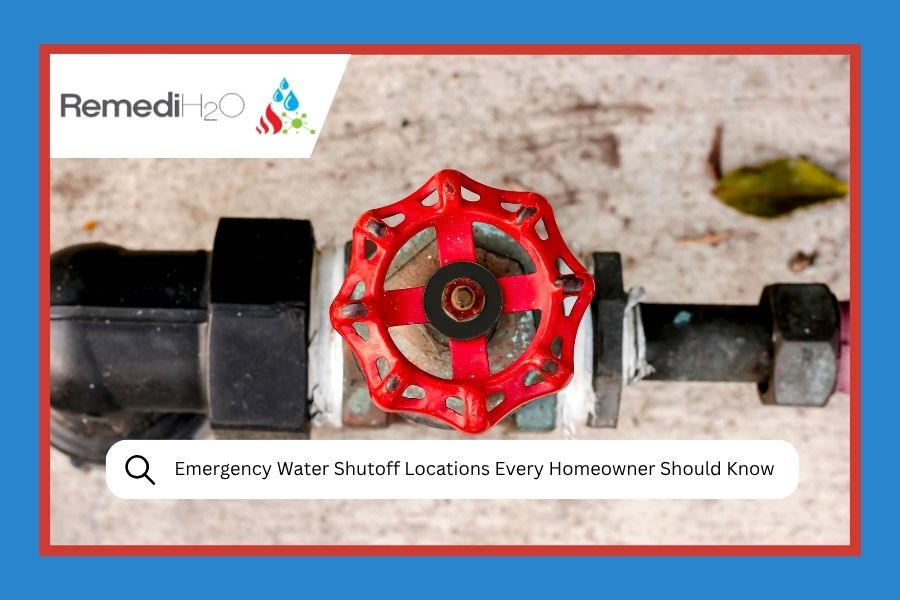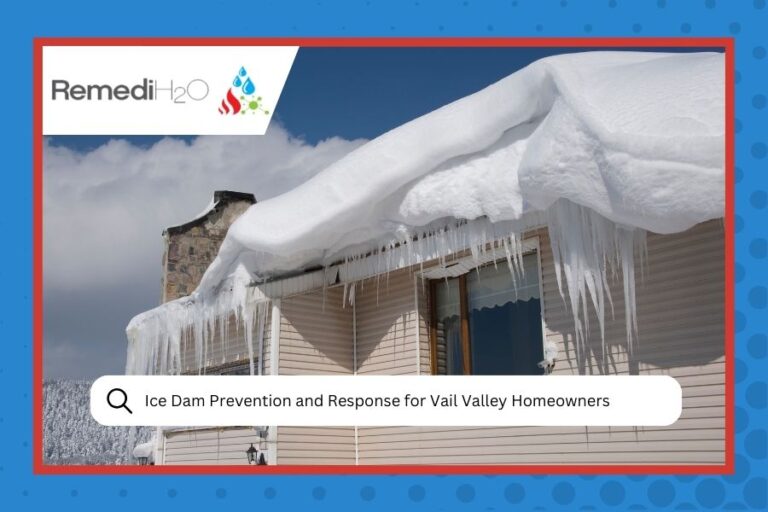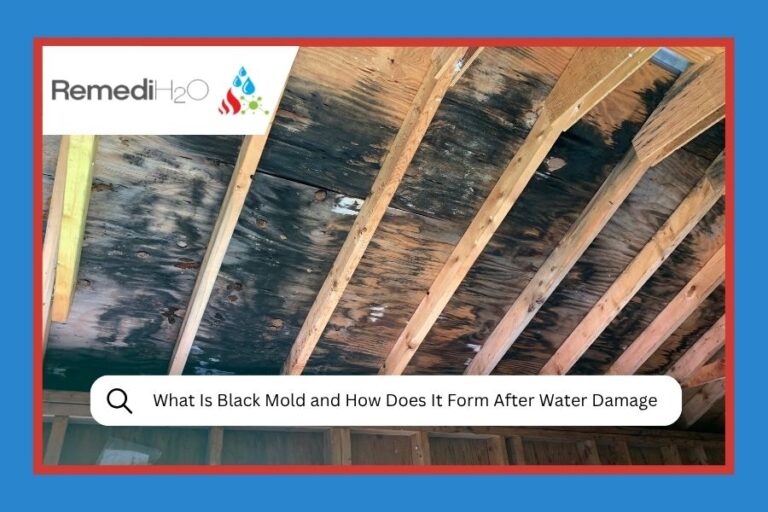Jump to Section:
You know that sinking feeling when you hear water running where it shouldn’t be? Maybe it’s 2 AM and you’ve stumbled into your kitchen to find water pooling around your dishwasher. Or you’re hosting Thanksgiving when someone yells from the bathroom about a “situation.” In moments like these, knowing exactly where your water shutoff valves are isn’t just helpful – it’s the difference between a minor hassle and a water damage disaster.
Here at RemediH2O, we’ve seen it all across Colorado’s Western Slope and Roaring Fork Valley. Most of the homeowners we help had no idea where their shutoff valves were until it was too late. So let’s fix that right now.
Why Knowing Your Shutoff Valves Actually Matters
Every minute water flows during a plumbing emergency adds up. More water means more damage to your floors, walls, and belongings. It means higher repair costs and a longer recovery time.
Think of your shutoff valves like fire extinguishers. You hope you never need them, but when you do, you want to know exactly where they are without thinking twice.
The Main Water Shutoff Valve: Your Home’s Emergency Brake
Your main water shutoff valve controls water flow to your entire house. When you locate this valve, snap a photo of it and text it to everyone in your household.
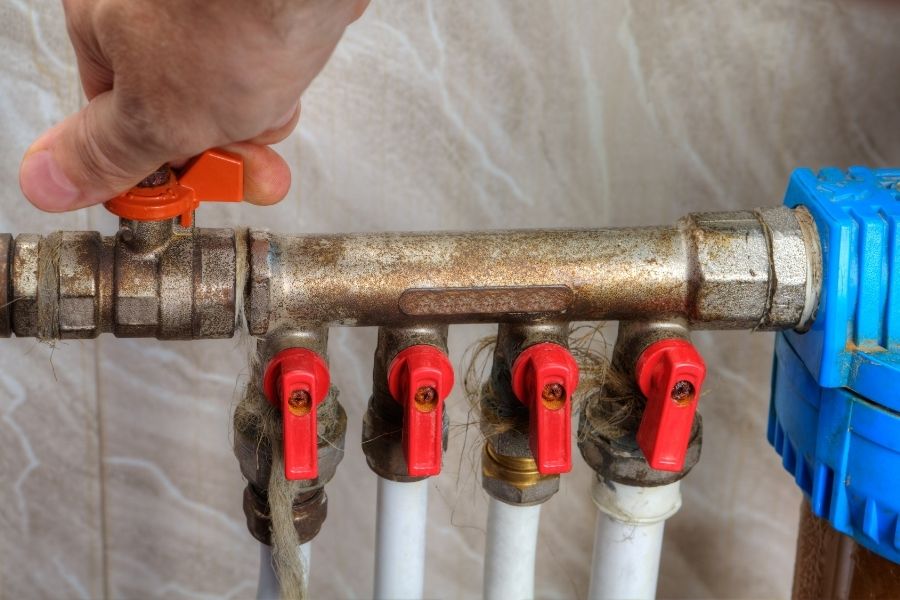
Your main water shutoff valve is typically located near where the water line enters your home, often in the basement or utility room.
Where to Find Your Main Shutoff Valve
What It Looks Like:
Your main shutoff is typically a round wheel (gate valve) or a lever-style handle (ball valve). Ball valves are easier – you just turn the lever perpendicular to the pipe. Gate valves require multiple turns clockwise to close completely.
Pro tip: Turn your main valve off and on once a year. Valves that sit unused for years can seize up, and the last thing you want is to discover that during an actual emergency.
Need Help After a Water Emergency?
Our team at RemediH2O responds 24/7 to water damage calls throughout Glenwood Springs, Aspen, and the entire Western Slope.
Fixture-Specific Shutoff Valves: Your First Line of Defense
Before you shut off water to your entire house, check for fixture-specific valves. These let you stop water at the source without affecting the rest of your home.
Toilet and Sink Shutoff Valves
Every toilet should have a shutoff valve on the wall or floor behind it. Under your sinks, you’ll find two valves for hot and cold water. Turn them clockwise to stop water flow to just that fixture.
Water Heater and Appliance Shutoffs
Your water heater has a cold water shutoff valve on the pipe leading into the tank. Washing machines have two valves behind them. Many homeowners turn these off when the machine isn’t in use.
Outdoor Hose Bibs (Especially Important in Colorado)
In areas like Carbondale, Aspen, and Glenwood Springs, outdoor spigots need shutoff valves inside your home. You should shut these off every fall to prevent frozen pipes during our Colorado winters. The shutoff is usually in your basement or crawlspace.
Winterizing your outdoor plumbing isn’t optional in our mountain communities. Preventing water damage starts with simple preparation.
How to Actually Use These Valves (When Panic Sets In)
Okay, so there’s water everywhere. What do you do? According to FEMA’s flood safety guidelines, quick action is essential to minimize damage.
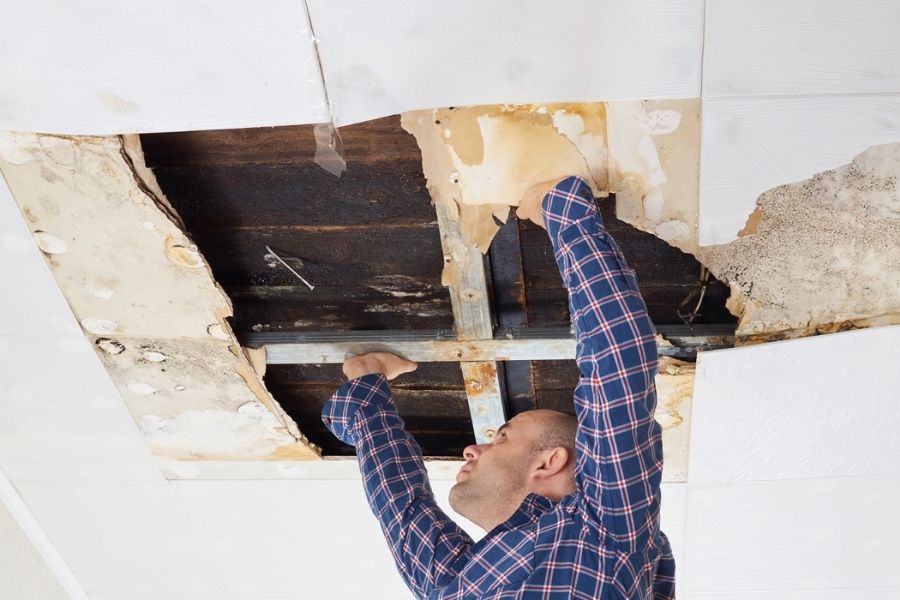
Water damage can escalate quickly, affecting ceilings, walls, and floors – making it critical to shut off water immediately.
| Step | Action |
|---|---|
| 1 | Stay calm. Easier said than done, we know. |
| 2 | Shut off the water. Start with the fixture-specific valve if you can identify the source. Can’t find it? Head straight to the main shutoff. |
| 3 | Turn clockwise. Remember: “righty-tighty, lefty-loosey.” |
| 4 | For ball valves: A quarter turn (90 degrees) does it. |
| 5 | For gate valves: Turn until it stops. Don’t force it. |
| 6 | Turn off electrical power to the affected area if there’s significant flooding. |
| 7 | Call for help. Whether that’s a plumber for repairs or our team for water damage restoration, don’t wait. |
After you’ve stopped the water, start documenting the damage with photos for your insurance company. If you’re dealing with more than a small puddle, give us a call. The faster we can start extracting water and drying things out, the less likely you are to end up with mold growth down the line.
Create Your Home’s Water Valve Map
Here’s a weekend project that could save you thousands: make a simple map of every shutoff valve in your home.
✓ What to Include:
- ✓ Main water shutoff location with a clear photo
- ✓ Individual fixture shutoffs for every toilet, sink, and appliance
- ✓ Outdoor hose bib shutoffs
- ✓ Water heater shutoff
- ✓ Any other valves specific to your home’s plumbing
Print it out, laminate it, and stick it somewhere obvious. Make sure everyone in your household knows where it is.
When to Call the Professionals
Sometimes shutting off the water is just the beginning. Call in backup if you’re dealing with:
- Sewage backups or contaminated water: This isn’t something to DIY
- Significant water accumulation: More than you can mop up with towels
- Water damage to walls, ceilings, or floors: The longer it sits, the worse it gets
- Any flooding that’s been present for more than a few hours: Mold can start growing within 24-48 hours
Our team at RemediH2O has been handling water emergencies throughout the Roaring Fork Valley for years. We’re IICRC-certified professionals who follow industry best practices for water damage restoration. We know how quickly things can escalate, especially when dealing with flash flooding during heavy rain seasons. We work directly with insurance companies to make the process as painless as possible.
Don’t Wait Until You Need It
Take 30 minutes this weekend. Grab a flashlight and go on a valve-finding adventure through your home. Test each one gently. Take photos. Make that map.
Because when water’s gushing and panic’s setting in, you don’t want to be googling “where is my water shutoff valve” on your phone.
And hey, if the worst does happen and you find yourself standing in water despite your best efforts, we’re here. Day or night, we’ll show up fast and get your home back to normal. That’s what we do.
Frequently Asked Questions
Q: What should I do if my main water shutoff valve is stuck or won’t turn?
A: Don’t force it – you could break the valve and make things worse. If possible, shut off individual fixture valves to stop the immediate problem, then call a plumber immediately. If water is still flowing and causing damage, contact your water utility company to shut off water at the meter.
Q: How often should I test my water shutoff valves?
A: We recommend testing your main shutoff valve at least once a year, and fixture-specific valves every six months. This prevents them from seizing up and ensures they’ll work when you need them. Replace any that feel stiff, leak, or don’t close completely.
Q: Can I install shutoff valves myself if my fixtures don’t have them?
A: While handy homeowners can install basic shutoff valves, we recommend hiring a licensed plumber if you’re not experienced with plumbing work. Improperly installed valves can leak or fail during emergencies, and some local codes require professional installation.
Q: What’s the difference between a gate valve and a ball valve?
A: Gate valves (round wheel handles) require multiple turns to close and can wear out over time. Ball valves (lever handles) close with a simple quarter turn and are generally more reliable. The main thing that matters is knowing which type you have so you can operate it correctly in an emergency.
Facing a Water Emergency?
RemediH2O is available 24/7 for emergency water damage restoration services throughout Colorado’s Western Slope and Roaring Fork Valley.
Call us anytime: (970) 715-6990
